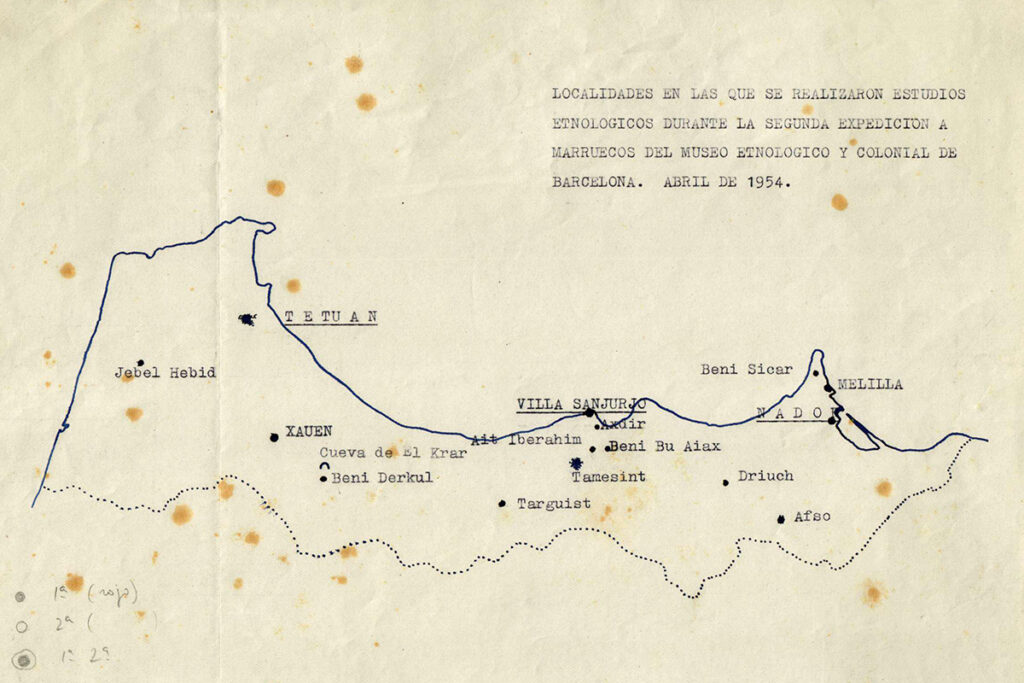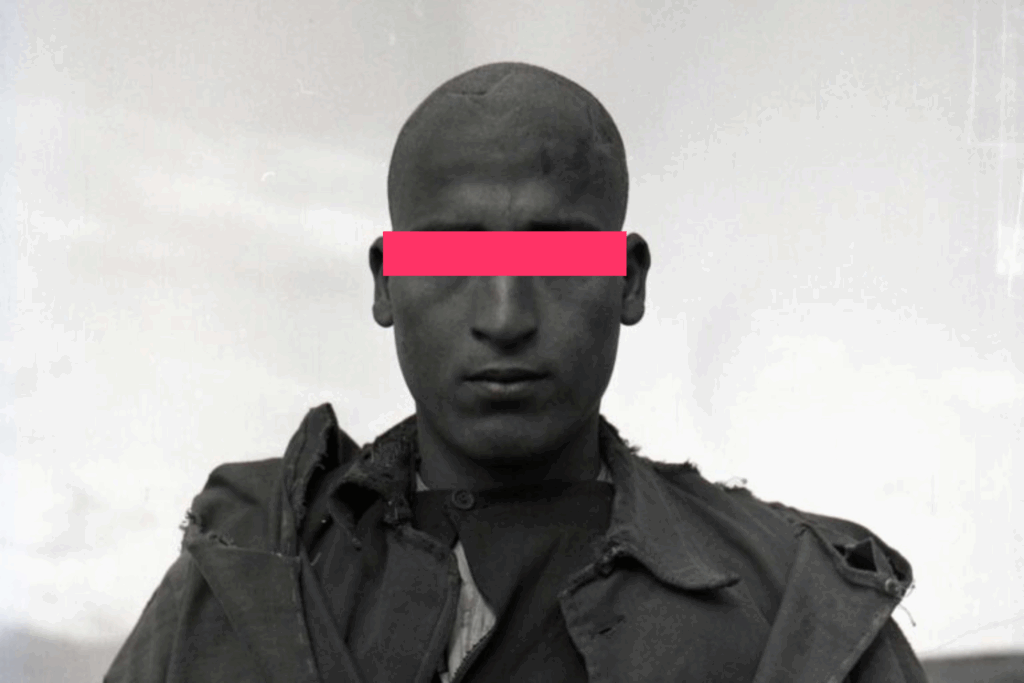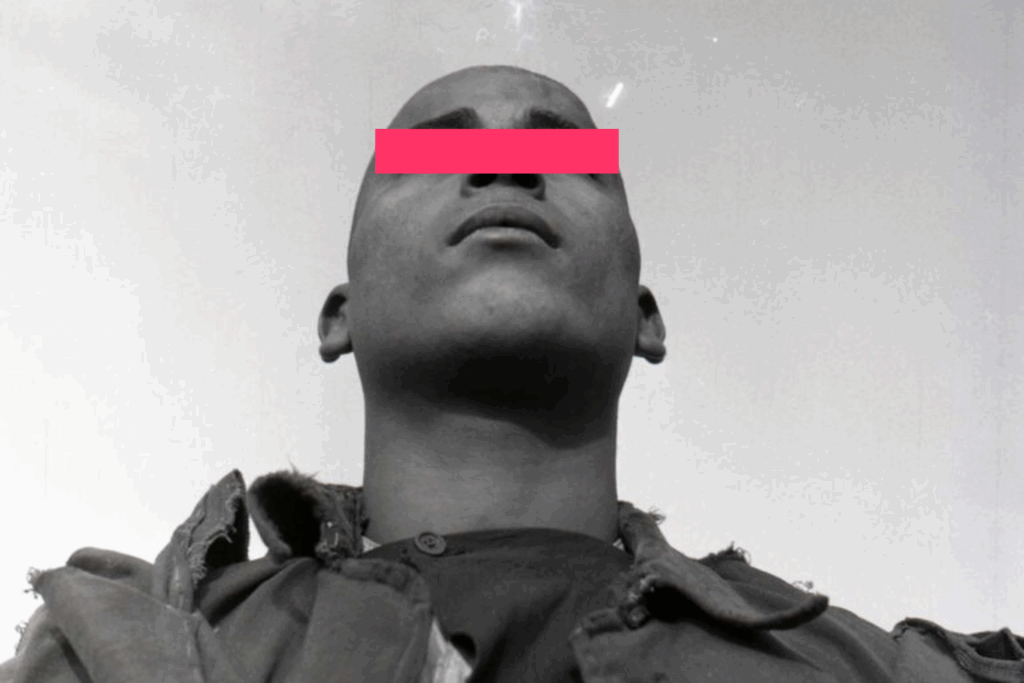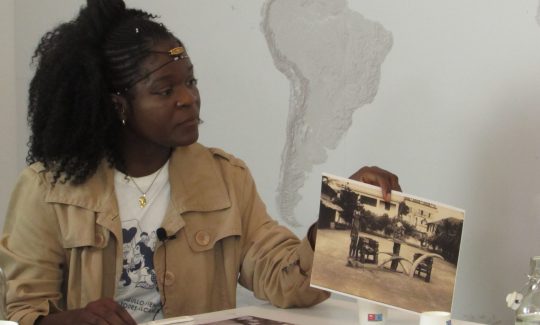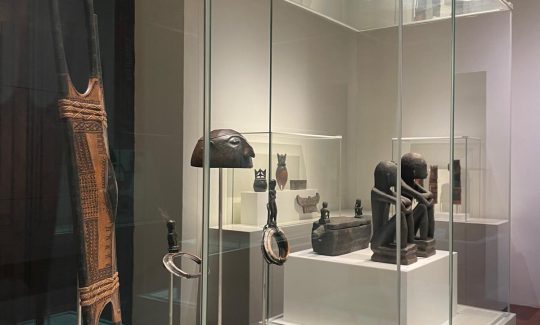The acquisition campaigns of objects were carried out in 1952, 1954 and 1956, the latter at the end of the Spanish colonial experience. This gave rise to one of the museum’s most numerous and flagship collections, which would continue in later years, and which has been the subject of partial exhibitions on several occasions throughout the history of the institution, becoming one of its emblems, until the founding of the MUEC, at which point the collection was partially sidelined.
August Panyella, director of the museum since its foundation, and his companion in tribulations, the sculptor Eudald Serra, led those expeditions and constructed a story that persuaded their audiences that both the chosen itineraries and the acquired pieces complied with a careful ethnological protocol. Supported by the network of interests and knowledge woven by the colonial administration, the expeditionists carried out rapid incursions into the Bled, inside the protectorate, guarded by an Africanist army that guarded those possessions as if they were, in effect, war booty.
Despite the undoubted attraction that the souks of Tetouan offered to carry out a comfortable policy of acquisitions almost without having to leave the rooms of the Hotel Regina, Panyella and Serra decided, especially in the expeditions of 1954 and 1956, to venture into the interior of the Rif. Not only because they had the support of a colonial administration eager to demonstrate the effectiveness of their government over the Arab and Berber populations of northern Morocco, but also because this same administration urged them to fulfill the expectations that had brought them to the other side of the strait to collect, in all their variety, the manifestations of material culture that Spain would jealously protect.
On the other hand, since another of the project’s objectives consisted of the creation, by Eudald Serra, of “anthropological sculptures” that would illustrate the racial typologies of the inhabitants of the protectorate, the expedition members began, from the first visit, in 1952, a process of selecting the models – men and women – that led them to visit barracks and women’s internment centers in the protectorate. The photographs resulting from those expeditions are a useful document for tracing the denigrating procedures through which representations of otherness were constructed, in various formats, during the colonial period.
More info here:

